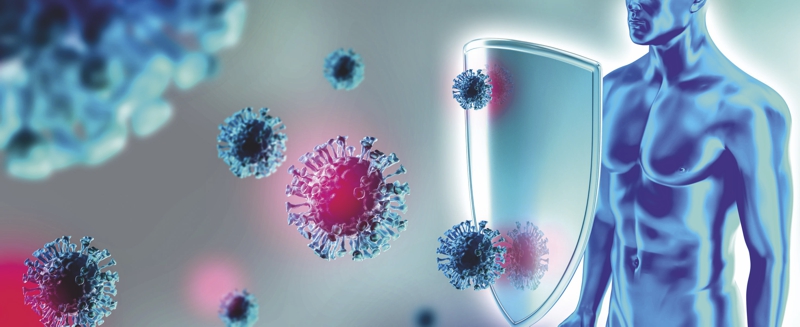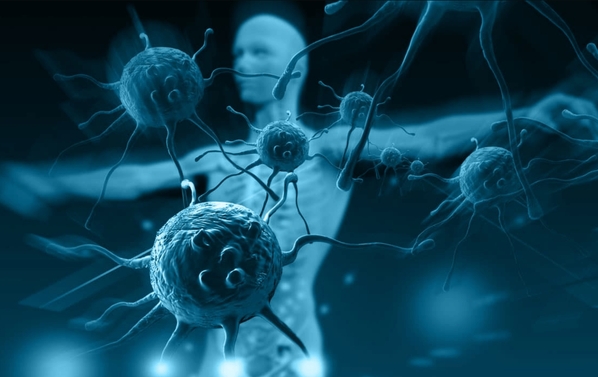Vaccination and Drugs
Should People Who Have Recovered from COVID Take a Vaccine?
Opinion | Epidemiology[1], immunology[2] and the clinical data[3] all say a clear “No!” There is no good reason to vaccinate the recovered.
A British friend, recovered from COVID, decided to get vaccinated despite being naturally immune. This is the email he recently sent me:
Marc I suffered a mild stroke on Wednesday 8 days after taking the AstraZeneca 2nd dose. Since I am a marathon runner I am a very ‘rare case’. I don’t smoke, have high blood pressure, high cholesterol, family history or come into any of the risk categories for blood clots…
You did warn me against taking the second dose and I wished I’d heeded your advice. I’ve taken a totally unnecessary risk with my life and I bitterly regret doing it.
Contrary to most, Tony was informed; he had been told about the power of natural immunity, about the long—if not lifelong—duration of immunity, of the risk inherent to any medical procedure (Yes, vaccination is a medical procedure!), as well as of the rising levels of adverse events. He admitted he hadn’t imagined it could happen to him…
Though it is hard to assess precisely the actual severity and breadth of vaccine-related adverse events, it is very clear that vaccination against COVID-19 isn’t as harmless[4] as pharmaceutical companies, mainstream media, academia, health authorities and the medical community have been saying. And, in contrast to high risk individuals who are still susceptible, recovered people have no real benefit to balance the additional risks of vaccination.
For over a year, mainstream media, health authorities as well as many “experts” have been downplaying the power of the immune system, dismissing natural immunity[5] and proclaiming that immunity to COVID-19 was short-lived[6]. Simultaneously, vaccines have been portrayed as the silver bullet to this crisis, an incidental procedure with no risk whatsoever. The data shows a different picture and many are coming forward[7] [8] to challenge the official narrative. We will demonstrate that the official narrative is a dangerous fallacy.
The human immune system is one of the most sophisticated achievements of evolution. The survival of our species has depended on it for millennia. Today, we still very much rely on it. For the record, 99% of people infected with SARS-CoV-2 recover without treatment. Only 1% of SARS-CoV-2 patients, who did not receive early home-based treatment, end up hospitalized[9]. In other words, the immune system overwhelmingly protects. Even vaccines are entirely dependent on the immune system: vaccines essentially teach our immune systems what viral markers to be prepared for, they are not cures per se. Without a functional immune system, there can be no effective vaccine[10].

On the waning immunity fallacy
Once recovered, the immune response recedes, notably via a decrease in antibodies. It is not only natural; it is indispensable to restore the body to a normal, balanced state. Just as a permanent state of fever is harmful, a high number of target-less antibodies or T-cells constantly circulating throughout the body could create serious complications, such as autoimmune diseases[11]. Taking an evolutionary perspective, only those whose antibody and T-cell count waned post-infection survived. So, a decreasing number of antibodies and T-cells is reassuring, even healthy.
But this decrease in T-cells and antibodies doesn’t mean that immunity is lost. It means the immune system has adapted to the new situation, and is now just on sentinel mode: Memory B- and T-cells, circulating in the blood and resident[12] in tissues, act as vigilant[13] and effective sentinels for decades:
- survivors of the Spanish Flu epidemic were tested for their immunity to the 1918 influenza virus 90 years later[14] [15] and still demonstrated immunity;
- people who had recovered from the 2003 SARS infection demonstrated robust T-Cell responses seventeen years later[16].
- the wide-spread prevalence of high cross-immunity[17] [18] [19] gained from past common cold infections—further demonstrates the resilience of natural immunity for coronaviruses.
Indeed, all recent studies show that specific anti-SARS-CoV-2 immunity remains effective[20] [21] [23] [24]. possibly for a lifetime[24]. Our immune system is a modular platform, it can combine in an infinite number of ways to address a multitude of threats in a variety of contexts. As such it is neutral to the viral threats it faces. In other words, there is absolutely no reason to believe that those recovered from Covid-19 would lose their immunity over the years, or even the decades[25] to come.
On the reinfection fallacy
You might have also heard of people becoming re-infected by SARS-CoV-2. Indeed, immunity, natural or vaccine-induced, isn’t the impenetrable shield described by many. Essentially harmless and asymptomatic reinfections do take place. That is, in fact, the very mechanism by which adaptive immunity is triggered.
However, symptomatic re-infections are very rare[26] [27]. Like an army that adapts its response to the size and the progression of its enemy forces, adaptive immunity provides a specific, rapid and resource-optimized response. As such reinfections are mostly asymptomatic[28] and recovered patients are protected from severe disease.
In fact, innocuous re-infections can play a positive public health role by acting as continuous immune updates[29] [30] for the population. They can help form a seamless and progressive adaptation to emerging variants and strains. And indeed a recent study showed that couples with children were more frequently asymptomatic than couples without, most likely because children act as natural and harmless immunization vehicles. The most likely reason why high density countries mostly have very low death tolls is that they have asymptomatic reinfections that regularly and widely update the population’s immunity.
On the variant fallacy
As demonstrated by the low numbers of symptomatic reinfections mentioned above, and also by multiple studies[31] [32], variants have thus far not escaped acquired immunity. Just as Americans can speak and interact seamlessly in England, unhindered by a few word variants[33], natural immunity is unhindered by variants, possibly more so than vaccine-induced immunity. There is ample evidence of the sophistication and breadth of the human immune system, and it is clear that a few minor gene changes in the virus cannot evade its arsenal.
Across the world[34], multiple studies demonstrate high levels of pre-existing cross-reactive T-cells[35] and antibodies to SARS-CoV-2. In other words, many were already largely immune via other coronaviruses. This is the most likely explanation for the unexpectedly high level of asymptomatic infections during the pandemic. More importantly, this demonstrates that even with large genetic differences, prior immunity to related coronaviruses is sufficient to avoid severe COVID-19. Therefore, it is quite evident that variants are of no concern to the recovered population.
On the vaccine better-than-natural-immunity fallacy
You might have heard people stating that vaccines provide better protection than natural immunity. That is an interesting way of bending reality. How can a vaccine be more effective at immunization than the disease it is trying to mimic?
Theoretically, there are several reasons explaining why natural immunity is better than vaccine-induced immunity:
- Fewer immune targets: mRNA/DNA vaccines present only a fraction of the virus genetic code (5-10%). For example, they don’t utilize the ORF1 highly immunogenic epitopes[36]. Therefore, the immune system recruits a smaller number of T-cells by tapping into a narrower repertoire and consequently mounts a less effective response[37]. The logic: Imagine you lose a number of key players for a football tournament, you might still win, but it will be harder.
- Longer immune trigger time: The smaller number of epitope targets also means that the alarm to the immune system will be delayed. This is a key driver of success in the COVID-19 battle. The wider the target repertoire, the faster the encounter between dendritic cells and identifiable antigens.
The logic: Like a party you go to, you can start partying much faster when you have ten friends there than when you have only one. They are just easier to find. - Inappropriate delivery location: The intramuscular delivery of current vaccines unfortunately doesn’t mimic viral penetration and propagation at all. Coronaviruses don’t enter the body via muscles. They do so via the respiratory tract, often infecting cell-to-cell. Contrary to muscle-delivered vaccines, natural immunity places a strong sentinel force of memory resident cells at the portals of entry[38] and shuts the body entrance to the virus preemptively. From an evolutionary standpoint, this makes perfect sense.
The logic: it’s much easier to stop an army coming through a narrow gorge than on the beaches of Normandy.
Recent research confirms this logic. One comparative study[39] in Israel found the protection from severe disease to be 96·4% for COVID-19 recovered individuals but 94.4% for vaccinated ones, and concluded “Our results question the need to vaccinate previously-infected individuals.” Another reference comparative study[40] [41] [42] by a team at New York University highlighted a faster, wider and more impactful humoral and cytotoxic reaction in recovered immunity versus vaccine-induced.
There is ample evidence that vaccinating people recovered from COVID-19 doesn’t bring any benefit. It quite possibly does the opposite, because of the risk of building tolerance to elements of the virus[43] translating into reduced immune potency.
On the vaccine innocuity fallacy
Without denigrating the incredible contribution of vaccines to modern medicine and public health, one needs to acknowledge that vaccines are a medical procedure. As such, vaccines should never be considered lightly. They are neither neutral, nor trivial, all the more so when they are injected into billions of people.
By their very nature, vaccines tinker with the sophisticated balance of one’s immune system. That in itself demands respecting rigid safety protocols. Though we have made considerable progress in our understanding of immunology, we are still very far from understanding its intricacies and subtleties, especially when it comes to novel mRNA and DNA technologies. Because of the risk of anaphylactic[44] shock, auto-immune diseases, unforeseen interactions, design flaws, deficient quality protocols, over-dosage, and so on, vaccines have traditionally been strictly regulated.
History teaches us to be watchful[45] with vaccines, from the botched inactivation of polio vaccines that ended infecting 40,000 kids[46] with polio in 1955, to the 1976 swine flu vaccine[47] which caused 450 to develop Guillain-Barré syndrome, to the more recent vaccine-induced outbreak of polio in Sudan[48]. The recent rejection[49] by Brazilian health authorities of the Bharat’s Covaxin is a clear reminder of how rigorous and independent our health authorities need to be if vaccines are to promote, not hinder, public health.
This article was published by the National Vaccine Information Center. It was originally published in BizNews. Marc Girardot is a member of PANDA and Senior Advisor in Biotech & Automotive/INSEAD MBA.
Note: This commentary provides referenced information and perspective on a topic related to vaccine science, policy, law or ethics being discussed in public forums and by U.S. lawmakers. The websites of the U.S. Department of Health and Human Services (DHHS) provide information and perspective of federal agencies responsible for vaccine research, development, regulation and policymaking.
1 The 2021 seasonal peak in Europe started down on January 22 when only 0.13% of the population was fully vaccinated.
2 “Comprehensive analysis of T cell immunodominance and immunoprevalence of SARS-CoV-2 epitopes in COVID-19 cases” by Alessandro Sette et al, Cell, February 2021.
3 “No point vaccinating those who’ve had COVID-19: Findings of Cleveland Clinic study” by Dr. Sanchari Sinha Dutta, June 2021.
4 Pfizer-BioNTech vaccine is “likely” responsible for deaths of some elderly patients, Norwegian review finds” by Ingrid Torjesen, British Medical Journal, May 2021.
5 “Why COVID-19 Vaccines Offer Better Protection Than Infection” by Brian W. Simpson, John Hopkins School Of Public Health Expert Insights, May 2021.
6 “Study Finds People Have Short-Lived Immunity to Seasonal Coronaviruses” by Dr. Francis Collins, CDC’s Director Blog, September 2020.
7 “Are Covid Vaccines Riskier Than Advertised? There are concerning trends on blood clots and low platelets, not that the authorities will tell you” by Joseph A. Ladapo and Harvey A. Risch, The Wall Street Journal, June 2021.
8 “Why we petitioned the FDA to refrain from fully approving any covid-19 vaccine this year” by Peter Doshi et al, The British Medical Journal Opinion, June 2021.
9 “Phase 3 trial shows REGEN-COV™ (casirivimab with imdevimab) …” show 4.1% of at risk Placebo (non treated) patients are hospitalized, or 1% of the general population.
10 “Coronavirus vaccines may not work in some people. It’s because of their underlying conditions.” by Ariana E. Cha, The Washington Post, May 2021.
11 “Determinants and outcomes of accelerated arteriosclerosis: Major impact of circulating antibodies” by Alexandre Loupy, Circulation Research, June 2015.
12 “Peripheral and lung resident memory T cell responses against SARS-CoV-2” by Meritxell Genescà et al, Nature, May 2021.
13 “Tissue-Resident Memory T Cells and Fixed Immune Surveillance in Nonlymphoid Organs” by Francis R. Carbone, Journal of Immunology, July 2015.
14 “Flu survivors still immune after 90 years” by Ed Yong, National Geographic.
15 “Neutralizing antibodies derived from the B cells of 1918 influenza pandemic survivors” by James E. Crowe Jr., Nature.
16 “SARS-CoV-2-specific T cell immunity in cases of COVID-19 and SARS, and uninfected controls” by Le Bert et al, Nature, July 2020.
17 “Targets of T Cell Responses to SARS-CoV-2 Coronavirus in Humans with COVID-19 Disease and Unexposed Individuals” by A.Sette et al, Cell, June 2020.
18 “A majority of uninfected adults show pre-existing antibody reactivity against SARS-CoV-2” by Pascal M. Lavoie et al, JCI Insight, March 2021.
19 “Cross-reactive antibody immunity against SARS-CoV-2 in children and adults” by Todd Bradley et al, Nature, May 2021.
20 “Robust SARS-CoV-2-specific T cell immunity is maintained at 6 months following primary infection” by Paul Moss, Nature Immunology, May 2021.
21 “Naturally enhanced neutralizing breadth against SARS-CoV-2 one year after infection” by Michel C. Nussenzweig, Nature, June 2021
22 “A long-term perspective on immunity to COVID” by ” by A.Radbruch & H-D.Chang.
23 “SARS-CoV-2 natural antibody response persists up to 12 months in a nationwide study from the Faroe Islands” by Peter Garred et al, 2021.
24 “SARS-CoV-2 infection induces long-lived bone marrow plasma cells in humans” by Ali H. Ellebedy et al, Nature, May 2021.
25 “Immunity to the Coronavirus May Last Years, New Data Hint” by Apoorva Mandavilli, New York Times, November 2020.
26 “Prior SARS-CoV-2 infection is associated with protection against symptomatic reinfection” by Christopher J.A. Duncan, Journal of Infection, December 2020.
27 “What we know about covid-19 reinfection so far” by Chris Stokel-Walker, British Medical Journal, January 2021.
28 “Antibody Status and Incidence of SARS-CoV-2 Infection in Health Care Workers” by Thomas G. Ritter, et al, New England Journal of Medicine, December 2020.
29 “Development of potency, breadth and resilience to viral escape mutations in SARS-CoV-2 neutralizing antibodies” by Paul D. Bieniasz et al, March 2021.
30 Get article on.
31 “Comprehensive analysis of T cell immunodominance and immunoprevalence of SARS-CoV-2 epitopes in COVID-19 cases” by A.Tarke et al… – Cell – 16-02-2021.
32 “Landscape of epitopes targeted by T cells in 852 individuals recovered from COVID-19: Meta-analysis, immunoprevalence, and web platform” by Matthew R. McKay et al, Cell, May 2021.
33 “How Broad is Covid Immunity?” by M.Yeadon/M.Girardot, Panda, March 2021
34 Countries: Canada, Ecuador, Gabon, Germany, India, Singapore, Sweden, UK, USA, Tanzania, Zambia.
35 “Cross-reactive CD4+ T cells enhance SARS-CoV-2 immune responses upon infection and vaccination” by Claudia Giesecke-Thiel, April 2021.
36 “Profiling SARS-CoV-2 HLA-I peptidome reveals T cell epitopes from out-of-frame ORFs” by Pardis C. Sabeti, Cell, June 2021.
37 “The landscape of antibody binding in SARS-CoV-2 infection” by Irene M. Ong et al, PLOS biology, June 2021.
38 “Adaptive immunity to SARS-CoV-2 and COVID-19” by Alessandro Sette & Shane Crotty, Cell, January 2021 – page 866.
39 “Protection of previous SARS-CoV-2 infection is similar to that of BNT162b2 vaccine protection: A three-month nationwide experience from Israel” by Amit Hupper et al, April 2021.
40 “Discrete Immune Response Signature to SARS-CoV-2 mRNA Vaccination Versus Infection” by Sergei Koralov, Cell, May 2021.
41 “We observe striking expansion of circulating plasmablasts in COVID-19 patients relative to healthy volunteers”.
42 “In COVID-19 (recovered) patients, we observed an expansion of cytotoxic populations and a dramatically elevated cytotoxic signature in NK cells, CD4 and CD8 T cells, and γδ T cells.”
43 “Differential Effects of the Second SARS-CoV-2 mRNA Vaccine Dose on T Cell Immunity in Naïve and COVID-19 Recovered Individuals” by Jordi Ochando et al, Cell, March 2021.
44 “Suspicions grow that nanoparticles in Pfizer’s COVID-19 vaccine trigger rare allergic reactions” by Jop de Vrieze, Science, December 2020.
45 “Historical Vaccine Safety Concerns”, CDC.
46 “The Cutter Incident: How America’s First Polio Vaccine Led to a Growing Vaccine Crisis” by Michael Fitzpatrick, Journal of the Royal Society of Medicine, 2006.
47 “The Public Health Legacy of the 1976 Swine Flu Outbreak” by Rebecca Kreston, 2013.
48 “UN says new polio outbreak in Sudan caused by oral vaccine” by Maria Cheng, Associated Press, September 2020.
49 “Anvisa denies certificate of good practice to Bharat Biotech, which produces Covaxin” by Enzô Machida and Murillo Ferrari, CNN, March 2021.







Had bad reaction to second Pfizer vaccine, possibly had COVID19 , hospitalized November 2019, before testing, wondering about getting booster now